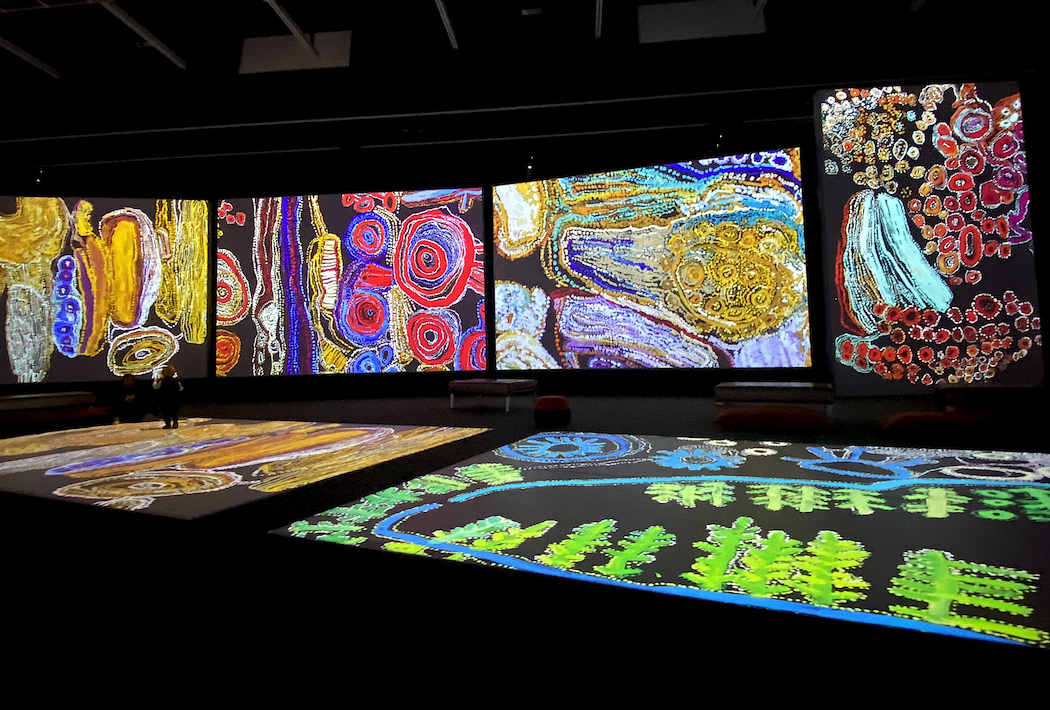
There’s a quote from author Geraldine Brooks in the National Museum of Australia’s Connection exhibition that goes something like this: Aboriginal Australians have the world’s oldest continuing artistic tradition. They began painting rock walls 50,000 years ago; early Europeans would not decorate the caves of Lascaux for another 35,000 years.
That fact is seemingly lost on many people, sadly even in our own country. As if the destruction of significant Indigenous rock art in the Pilbara region in 2020 wasn’t bad enough, there was another telling reminder of how little our cultural heritage is valued when the Federal Government this week gave the go-ahead to a fertiliser plant, requiring at least three culturally important sites in the Pilbara to be relocated. Can you imagine the outcry if the Lascaux caves were relocated to make way for a fertiliser plant?
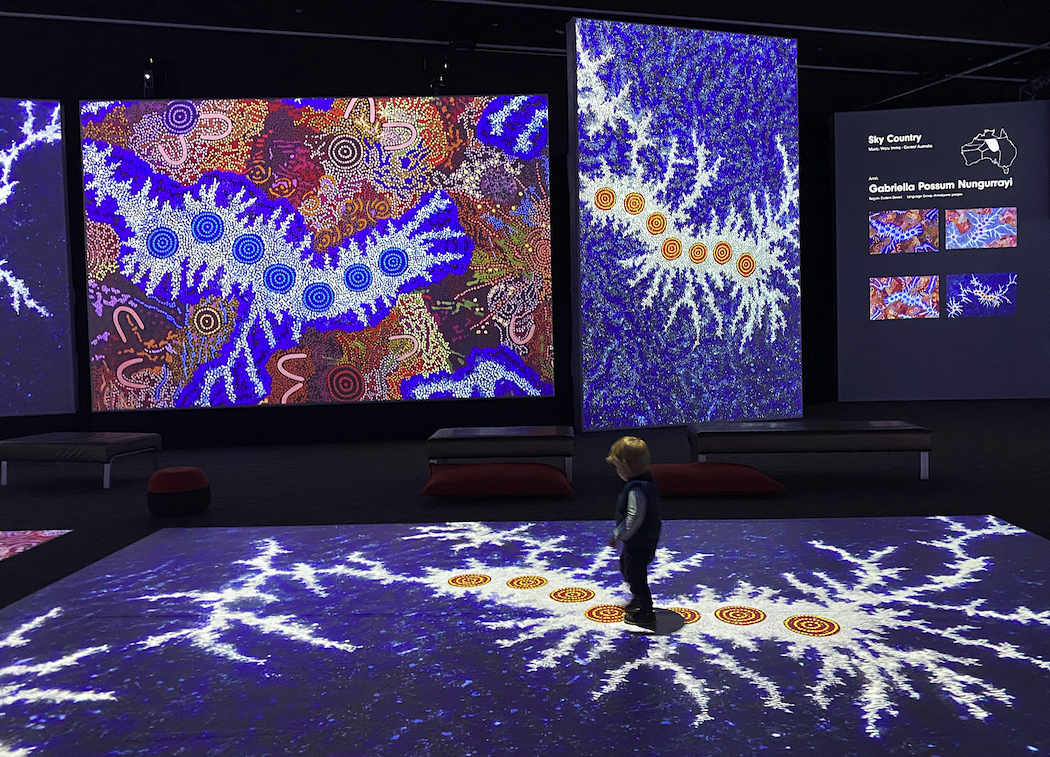
Connection: Songlines
Every Australian should run, not walk, to the National Museum in Canberra to catch Connection: Songlines from Australia’s First Peoples before it closes on October 9.
This spectacular exhibition was created and produced by Grande Experiences, the same folk who produced the multi-sensory exhibition Van Gogh Alive. It uses large-scale projections and cutting-edge light and sound technology to provide a kaleidoscopic view of the Songlines (corridors or pathways of knowledge) that criss-cross the continent.
Laid down over millennia by ancestral creator beings, Songlines were a way of explaining creation, transmitting cultural values, and passing on knowledge. The exhibition provides an entry point into the universe of Songlines. Exploring the spiritual connections to land, water and sky through a vibrant symphony of sound, light and colour, it is a powerfully rich story and totally captivating.
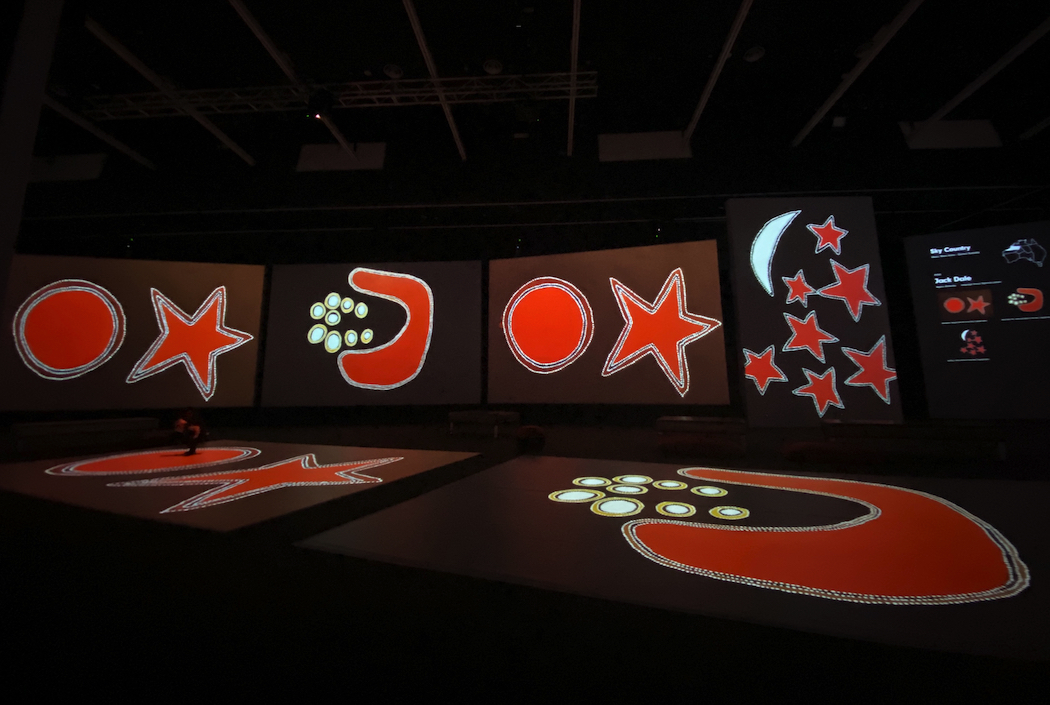
Works from at least 70 Aboriginal and Torres Strait Islander artists were digitised for the exhibition, their paintings juxtaposed with photographic images of country and ceremony. The artistic line-up represents the great diversity of our First Nations peoples. Some are emerging artists, others are well-established. Most are from remote regions of the country.
The work of both traditional and contemporary artists is featured. Emily Kame Kngwarreye, Albert Namatjira, Maureen Baker, Barbara Weir, Minnie Pwerle, and Lin Onus are just some of the artists whose work is showcased.
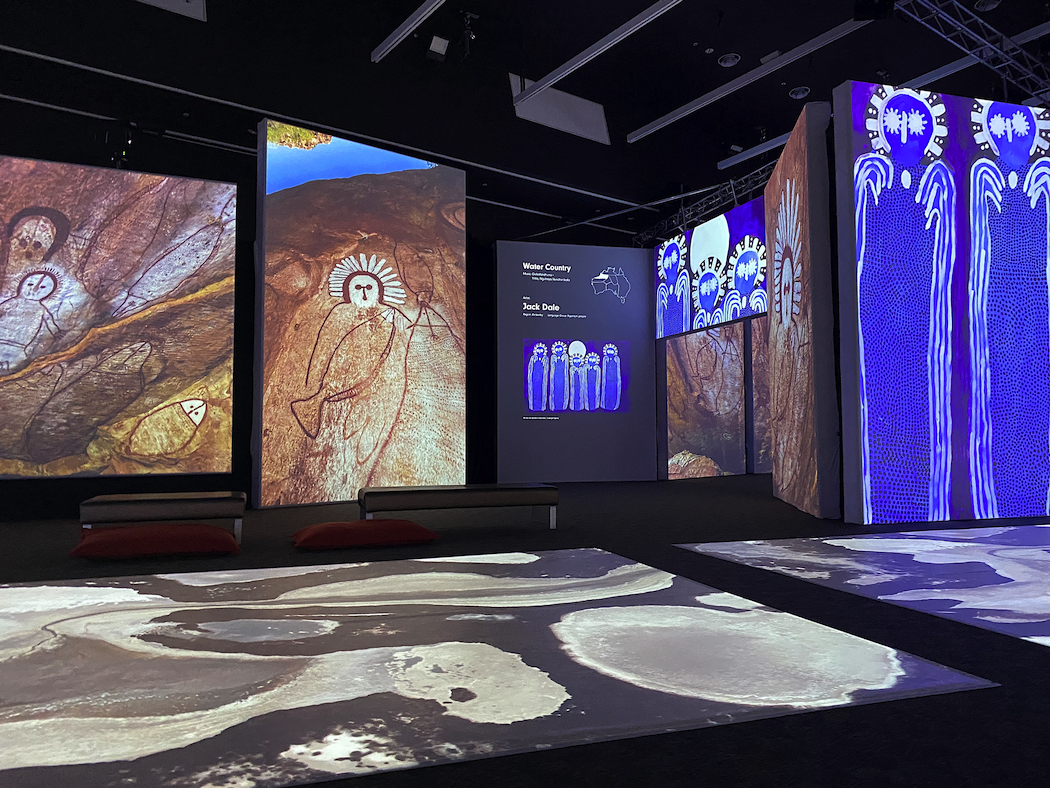
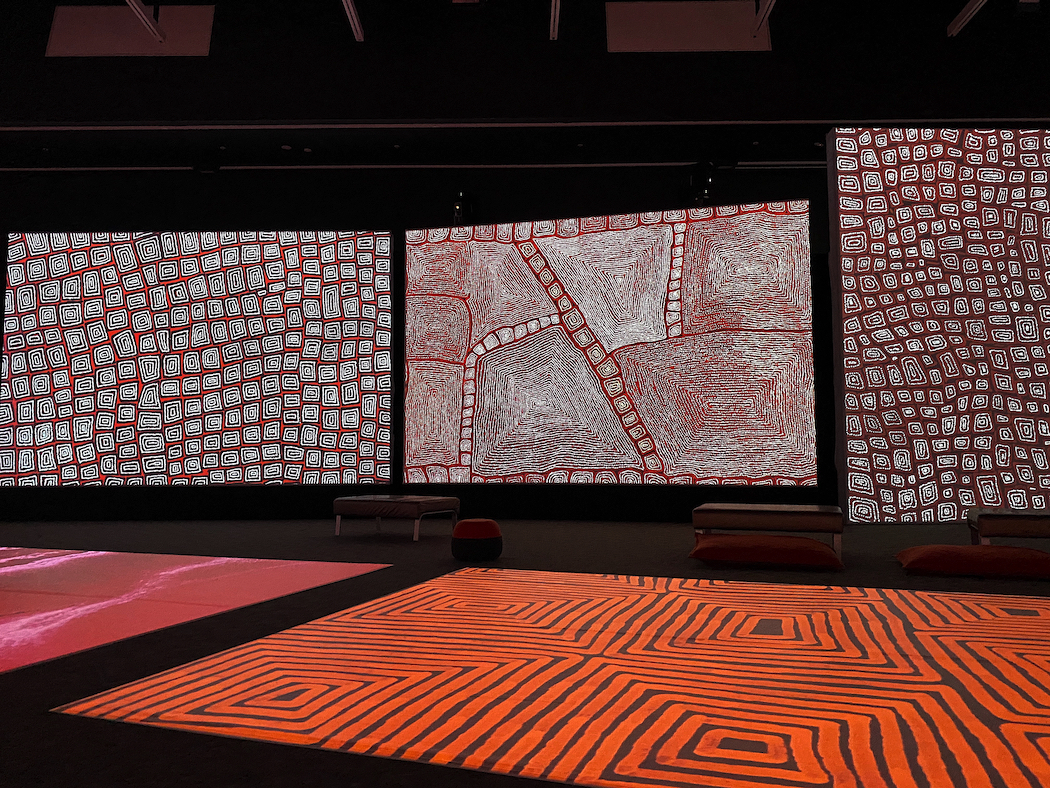
The soundtrack is as magnificent as the visuals, with works by Indigenous musicians including William Barton, Yothu Yindi, Gurrumul, Emily Wurramara, and Archie Roach. The soundtrack is available on Spotify but sadly not on other streaming services nor on disc.
Entry to the National Museum of Australia is free but there is a cost to see Connection: $28 off-peak (weekdays during the ACT school term) and $35 on weekends, public holidays and ACT school holidays. Concession, children and family prices are available. Bookings are recommended.
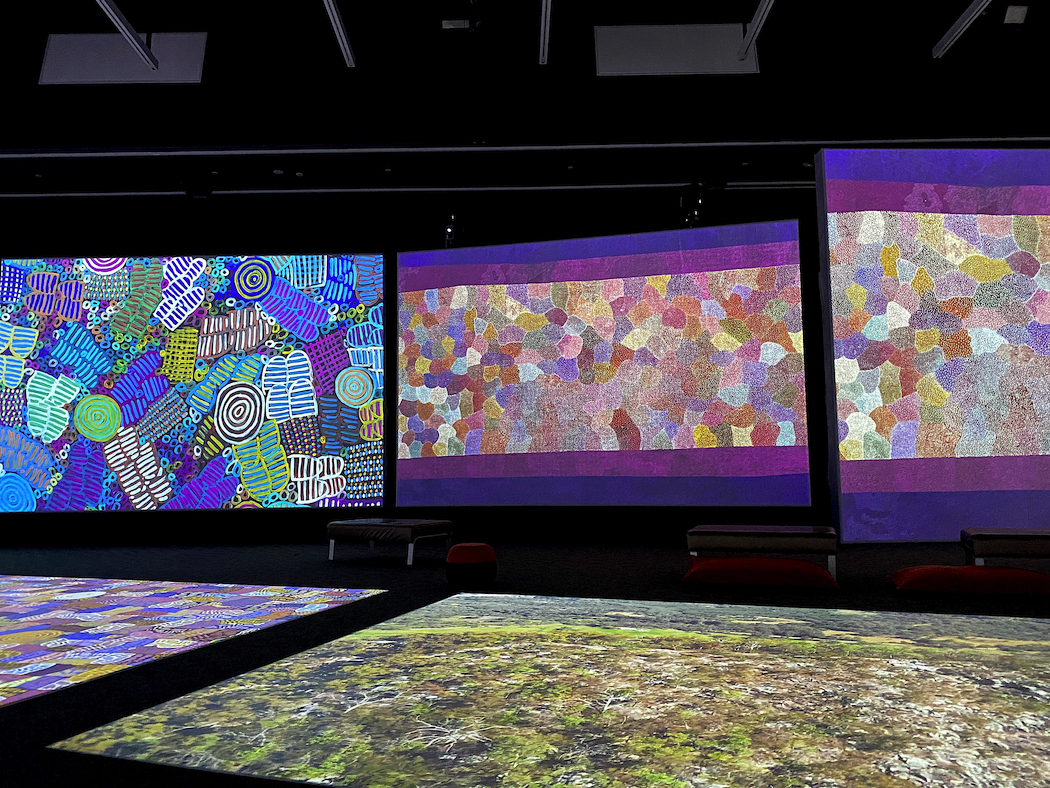
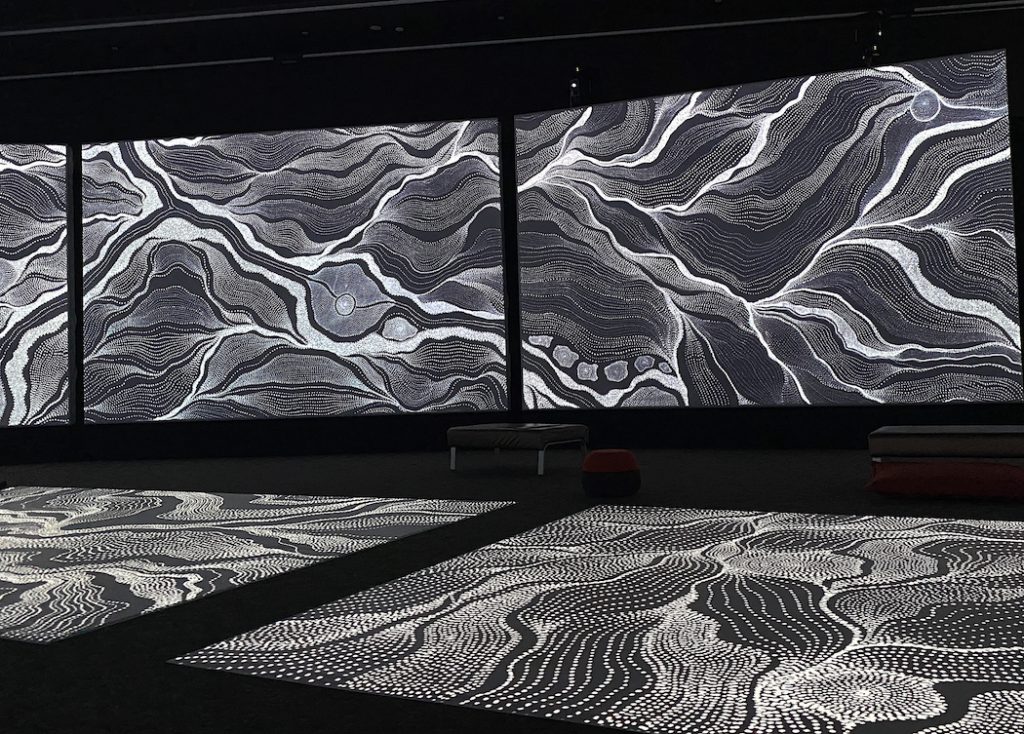
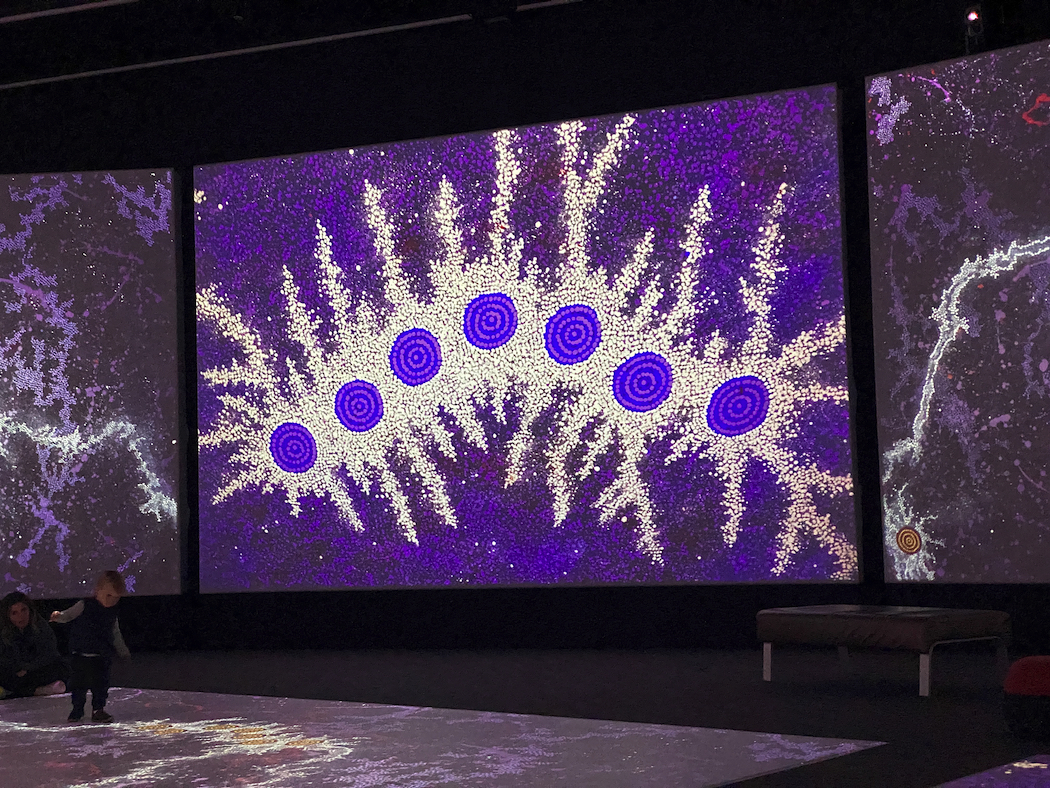
If you go:
National Museum of Australia
Lawson Crescent
Acton Peninsula, Canberra
Daily 9am to 5pm, closed Christmas Day.
Tel: 1800 026 132
www.nma.gov.au
Food Wine Travel visited the exhibition at our own expense. We hope this small selection of images from our visit will inspire you to put Canberra and the National Museum of Australia’s Connection: Songlines from Australia’s First Peoples exhibition on your itinerary.

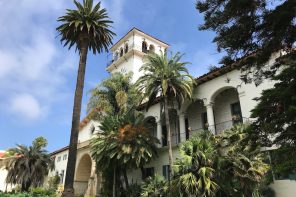
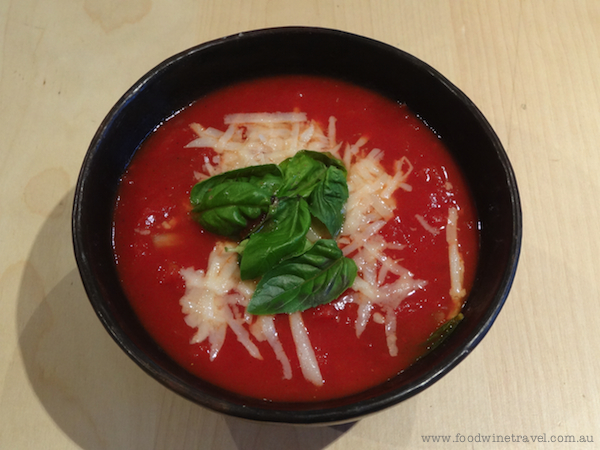
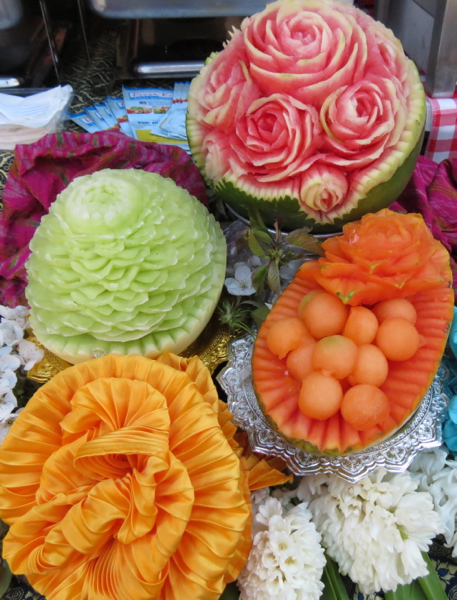
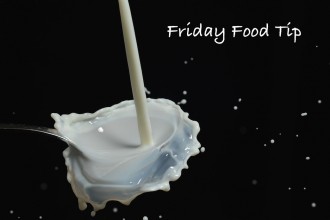
I loved this exhibition too, simply stunning!